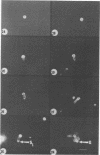Abstract
When stained by using an indirect fluorescent-antibody technique, Methylosinus trichosporium displayed an uneven fluorescence. Exospores and the polar tips of some vegetative cells displayed a more intense fluorescence than the other cells. Cross-absorption of the specific anti-M. trichosporium immunoglobulin G with exospores resulted in no fluorescence of exospores or exospore regions of sporulating vegetative cells. This demonstrated that antigens were present on exospores and exospore regions of vegetative cells that are different from vegetative cell antigens. Taking advantage of this phenomenon, three fluorescentantibody staining techniques were developed which were used to study the life cycle of M. trichosporium.
Full text
PDF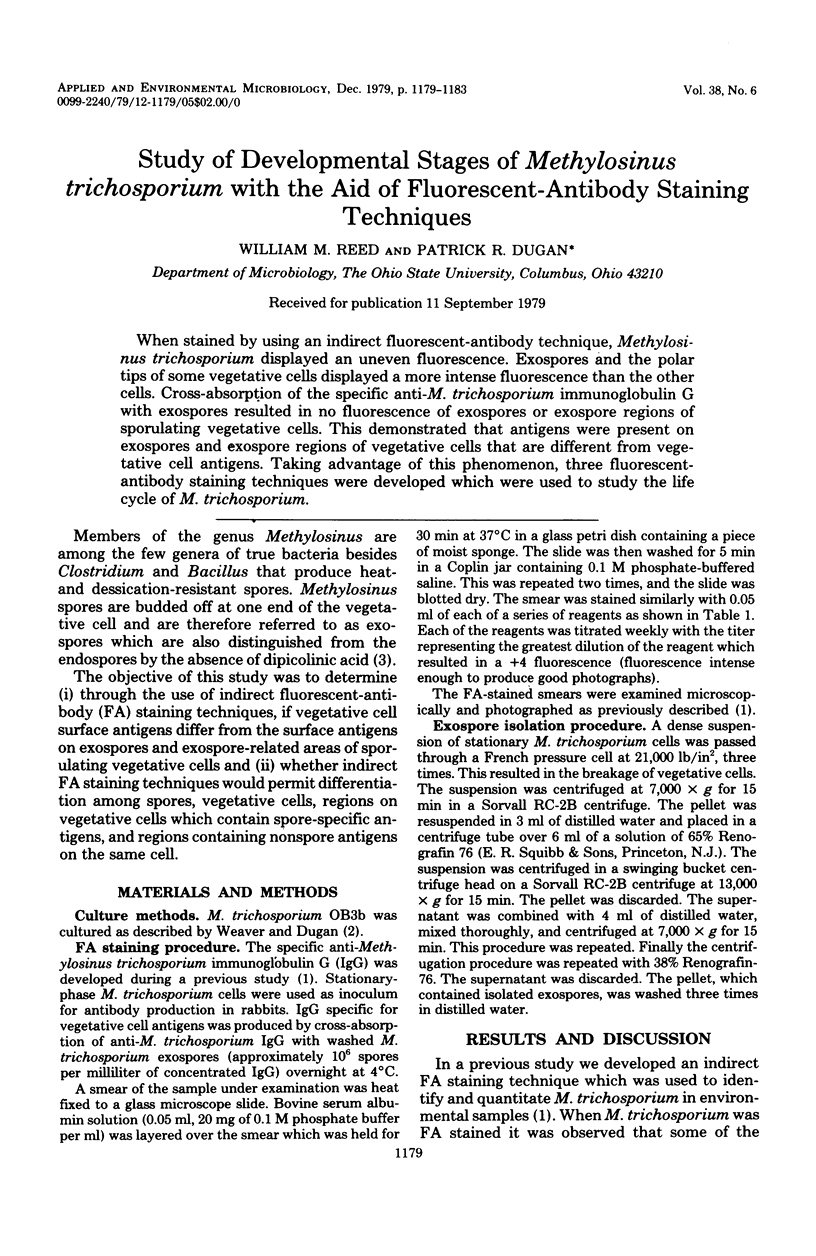
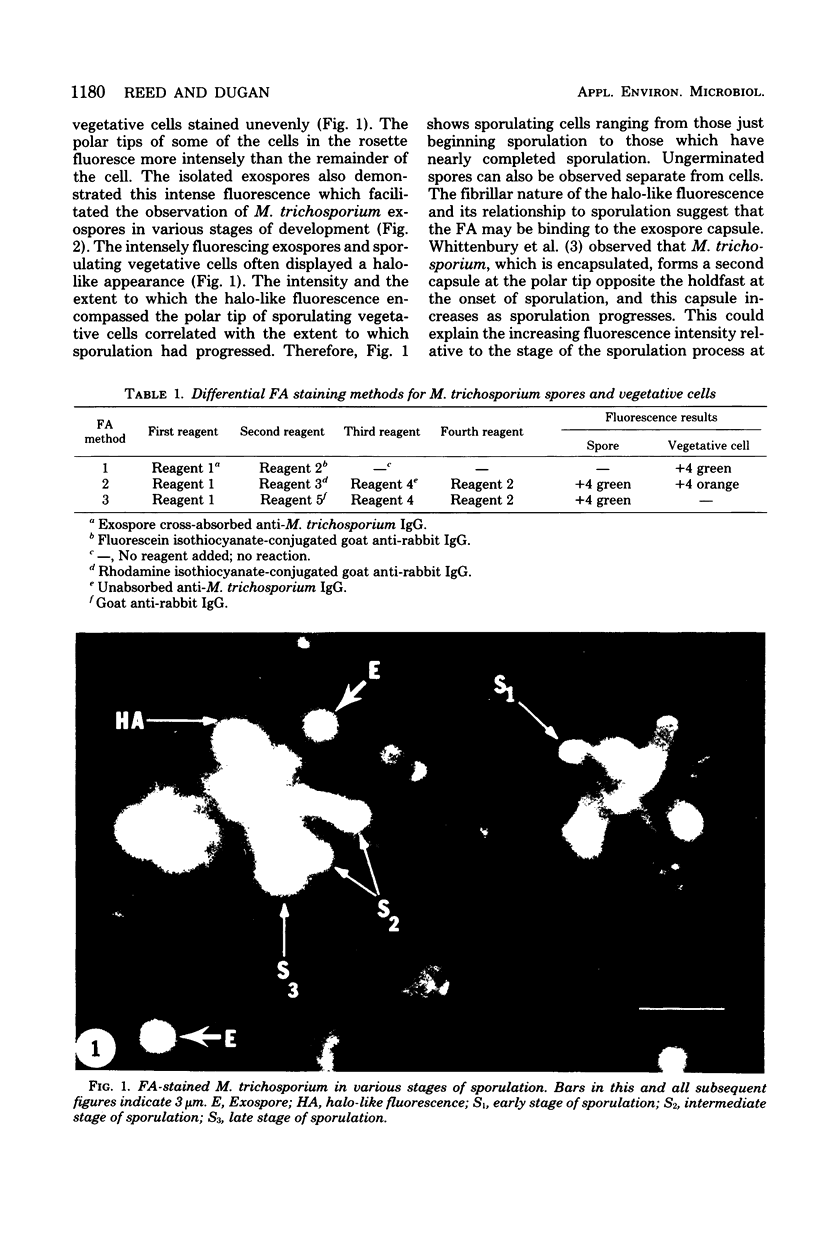
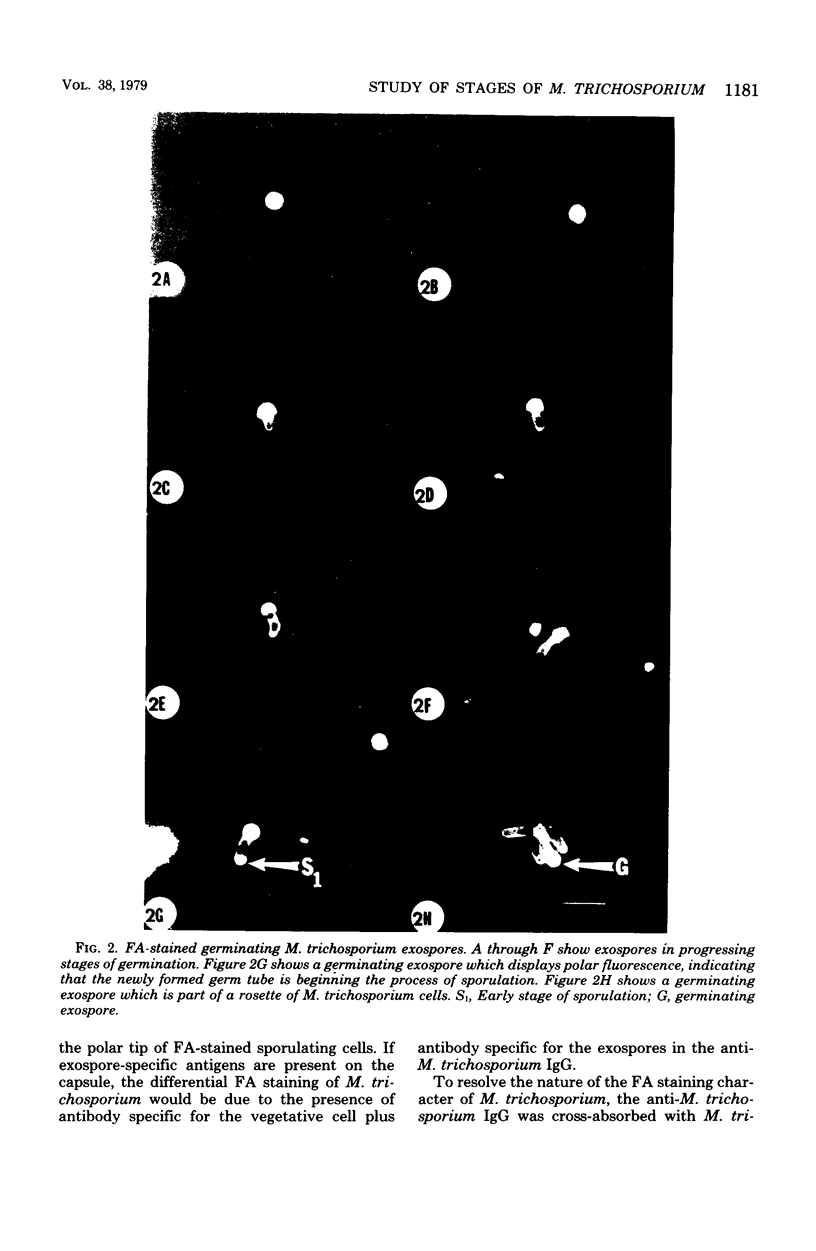
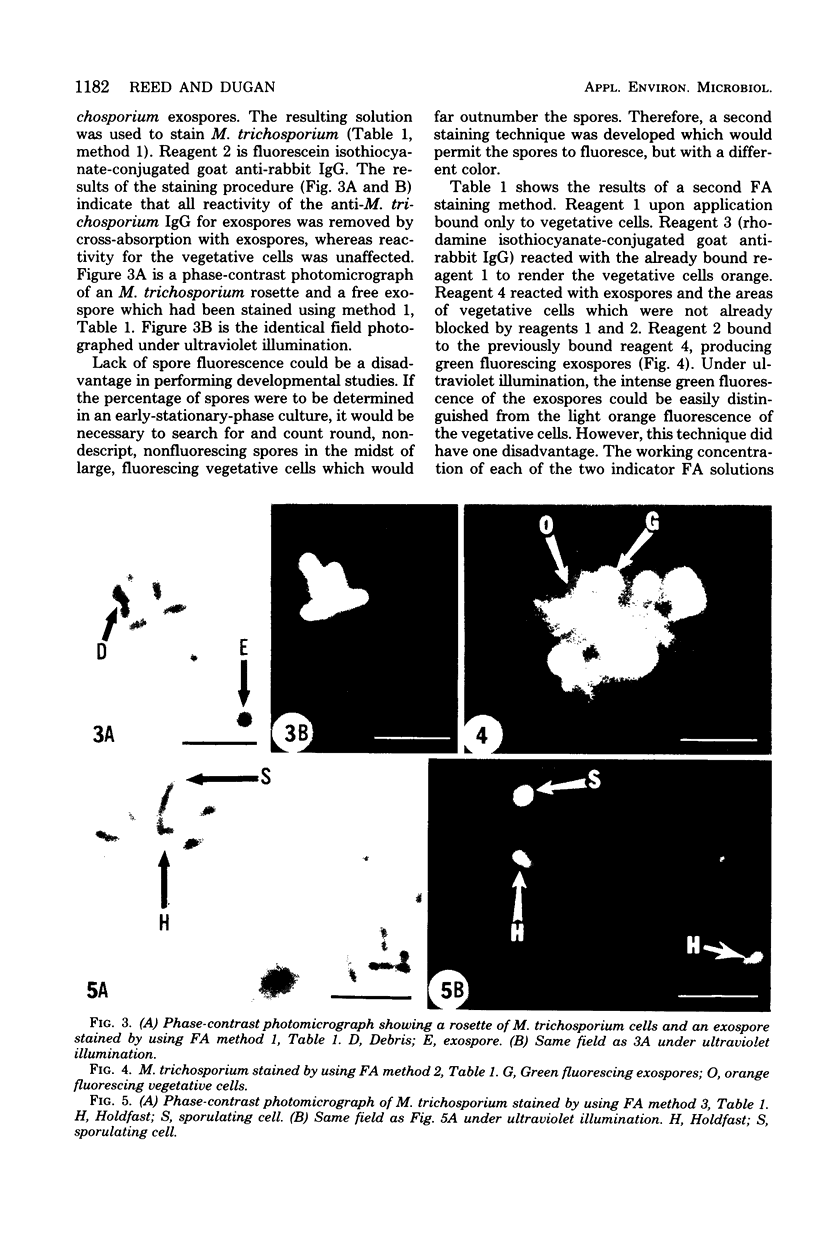
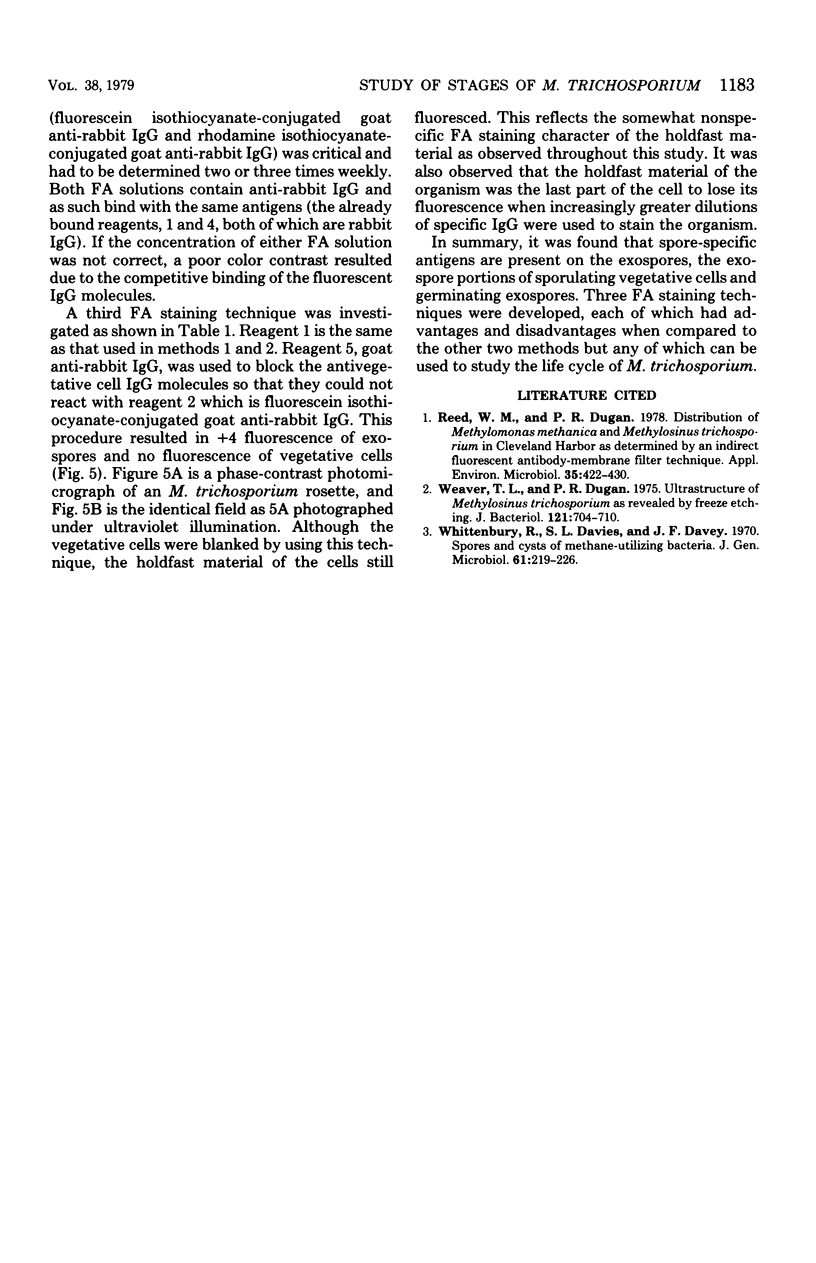
Images in this article
Selected References
These references are in PubMed. This may not be the complete list of references from this article.
- Reed W. M., Dugan P. R. Distribution of Methylomonas methanica and Methylosinus trichosporium in Cleveland Harbor as Determined by an Indirect Fluorescent Antibody-Membrane Filter Technique. Appl Environ Microbiol. 1978 Feb;35(2):422–430. doi: 10.1128/aem.35.2.422-430.1978. [DOI] [PMC free article] [PubMed] [Google Scholar]
- Weaver T. L., Dugan P. R. Ultrastruct of Methylosinus trichosporium as revealed by freeze etching. J Bacteriol. 1975 Feb;121(2):704–710. doi: 10.1128/jb.121.2.704-710.1975. [DOI] [PMC free article] [PubMed] [Google Scholar]
- Whittenbury R., Davies S. L., Davey J. F. Exospores and cysts formed by methane-utilizing bacteria. J Gen Microbiol. 1970 May;61(2):219–226. doi: 10.1099/00221287-61-2-219. [DOI] [PubMed] [Google Scholar]




